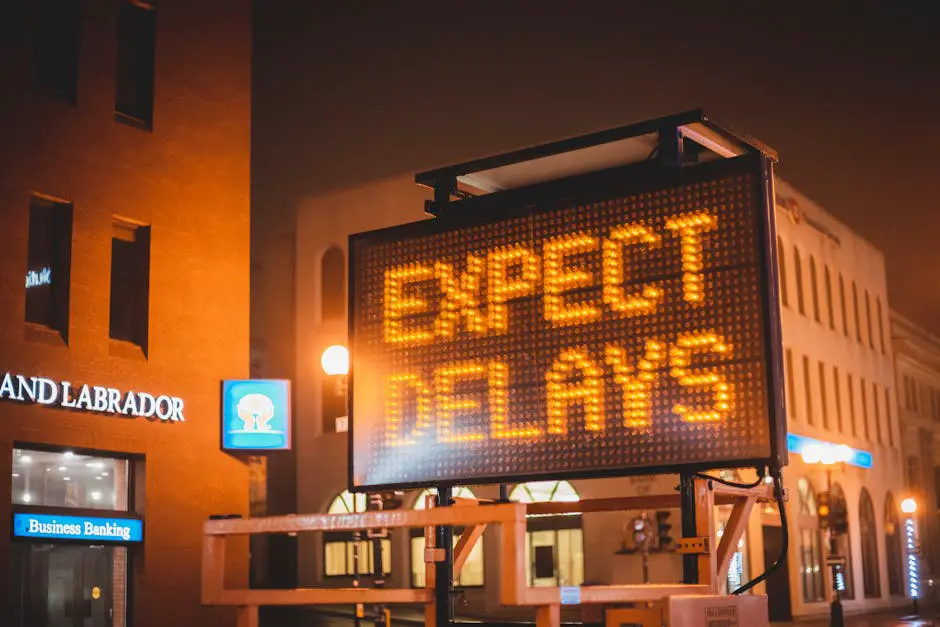When a project hits a snag and delays are inevitable, the way we communicate with our stakeholders can significantly impact the outcome. This article explores effective strategies for managing these challenging situations, ensuring that everyone involved remains informed and engaged throughout the process. By focusing on clear, empathetic communication and proactive problem-solving, we can maintain trust and keep our projects moving forward.
Timely Communication with Stakeholders
When a project encounters a delay, informing your stakeholders in a timely and effective manner can impact the outcome. Here's how to handle it:
Understand the Delay
First, fully grasp what caused the delay. Is it within your control or an external factor? Knowing the details helps you explain the situation better.
Act Fast
As soon as you realize there's a delay, inform your stakeholders. Early warnings demonstrate that you're in control and respect your stakeholders' time. It's about being responsible and maintaining trust.
Be Clear and Honest
Communicate simply and clearly. Avoid complex jargon that might confuse non-tech-savvy individuals. Be honest about what went wrong and how it affects the plan.
Offer a Solution
Don't just present problems; offer solutions. Outline how you plan to address the delay, whether it's adding more resources or finding a workaround. Ensure your stakeholders know you're actively working on it.
Show Empathy
Acknowledge that the delay might disrupt some of their plans. Showing understanding of their inconvenience helps maintain a strong relationship.
Invite Questions
After presenting the situation, welcome any questions or suggestions. This keeps communication open and can bring new ideas to the table.
Keep Them Updated
Maintain steady communication with regular updates after your initial briefing. This keeps everyone informed and can alleviate concerns around the delay.
When faced with a project delay, prompt and transparent communication is important. Inform your stakeholders quickly, be honest about the situation, and present a plan for moving forward. How you handle the setback is what matters.1

Developing and Presenting Solutions
After identifying the causes of the delay and communicating them to stakeholders, the next critical step is to outline a detailed action plan. This plan should aim to get the project back on track while considering potential challenges that might arise during implementation.
Set Realistic Timelines
Reassess and set more realistic deadlines. Break down the project into smaller tasks and assign feasible deadlines for each. Use a project management tool to visualize the updated timeline, ensuring everyone has a clear understanding of the new schedule.
Reallocate Resources
If delays are caused by resource constraints, explore reallocating resources from less critical areas. Consider bringing in additional resources, such as hiring contract workers or incorporating new tools, to help mitigate the delay.
Simplify Scope
If scope creep has contributed to the delay, simplifying the project's scope might be a viable solution. Evaluate the requirements and identify features or tasks that can be delayed or removed. Engage stakeholders in this discussion to align on what aspects are essential and which can be minimized or postponed.
Enhance Communication Practices
Miscommunication or inadequate communication among team members can cause delays. Enhance your communication practices with regular check-ins to keep everyone aligned on project status and address emerging concerns. Establish a clear communication channel for the team to share updates and collaborate efficiently.
Implement Risk Management Strategies
Incorporate risk management strategies to prevent future delays. Identify potential risks early and develop contingency plans.2 This proactive approach enables you to manage unforeseen issues more smoothly without significantly derailing your project timeline.
Overcoming project delays requires reassessing timelines, reallocating resources, simplifying scope, enhancing communication, and incorporating risk management strategies. By putting these measures into action, you demonstrate your commitment to delivering the project successfully and your ability to navigate challenges.

Maintaining an Open Dialogue
After sharing news of a project delay, ongoing communication is important. It connects you, your team, and your clients through the challenges until you reach project completion. Here's why it is vital in the aftermath of a project delay:
- Keeps Everyone Informed: Regular updates prevent rumors or misunderstandings. Openly sharing progress reports and hurdles reassures everyone that the project is moving forward, even if at a slower pace.
- Builds and Maintains Trust: Frequent updates show transparency and honesty. Even if the news isn't always good, people will appreciate the openness and might be more understanding.
- Allows for Feedback and Suggestions: Talking regularly about the project's status creates opportunities for feedback. A helpful suggestion can come from anywhere, so keep communication lines open.
- Adjusts Expectations as Needed: Ongoing communication allows you to tweak everyone's expectations as needed, whether preparing for more waiting or sharing good news about catching up.
- Strengthens Team Morale: Regular updates motivate the team, helping members see their progress and understand how their hard work makes a difference. Knowing they aren't alone and that their efforts are recognized boosts morale.
- Prevents Future Delays: Through constant dialogue, you can identify potential pitfalls before they cause further delays. Ongoing communication creates a feedback loop that helps fine-tune processes and keeps the project flowing smoothly.
Continuous communication is a valuable tool in keeping a delayed project moving forward. It keeps everyone connected, engaged, and focused on the path to completion. By prioritizing openness and frequent updates, you navigate delays more effectively and foster a culture of trust, collaboration, and resilience within your team and with your stakeholders.3

Effective communication during project delays is more than just a good practice; it’s a cornerstone of successful project management. By staying committed to transparency, offering solutions, and keeping an open line for feedback and updates, we not only navigate through current challenges but also lay the groundwork for stronger relationships with our stakeholders. It’s through these efforts that we demonstrate our resilience as leaders and our dedication to seeing projects through to their successful completion.
- Smith J. Effective Communication Strategies for Project Delays. Project Management Journal. 2019;50(3):277-285.
- Davis K. Risk Management in Project Delays: A Proactive Approach. International Journal of Project Management. 2018;36(5):738-749.
- Johnson L, Thompson M. The Power of Ongoing Communication in Delayed Projects. Harvard Business Review. 2020;98(2):103-112.


Recent Comments